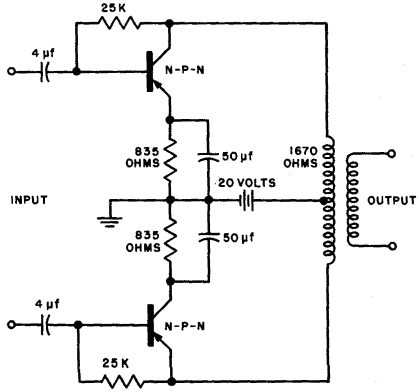| Transistor Basics is a free introductory textbook on transistors and their basic applications. See the editorial for more information.... |

|

Home  Transistor Amplifiers Transistor Amplifiers  Class A Amplifiers Class A Amplifiers  Push-Pull Operation Push-Pull Operation |
||






|
||
|
Push-Pull OperationAuthor: Leonard Krugman Whenever possible, transistor power amplifiers should be operated as push-pull stages. Push-pull operation has several desirable features, including the elimination of the even-order harmonics and the d-c component in the load. The first factor is particularly fortunate, insofar as transistor applications are concerned. It was noted previously that operation at high values of collector current introduces a distortion due to crowding of the collector current-voltage lines. Thus, for a given value of allowable distortion, push-pull operation will allow the transistors to be driven into the higher Ic regions. In turn, each transistor delivers more power to the load than when it is connected for single-ended operation.
Fig. 5-11. Class A push-pull amplifier.
|
||
Home  Transistor Amplifiers Transistor Amplifiers  Class A Amplifiers Class A Amplifiers  Push-Pull Operation Push-Pull Operation |
||
Last Update: 2010-11-17


